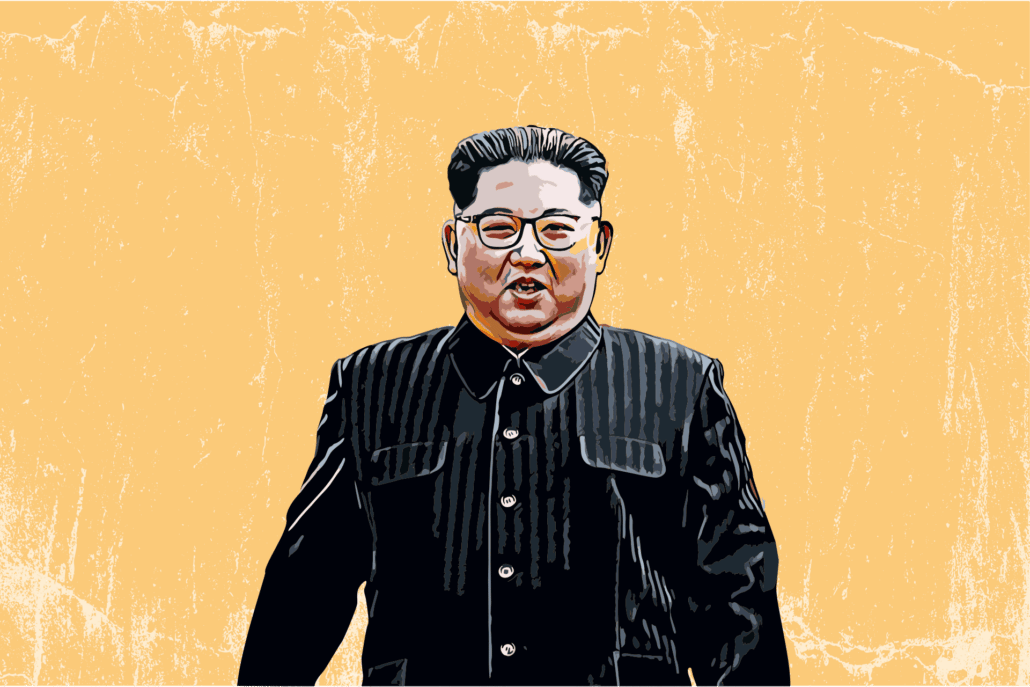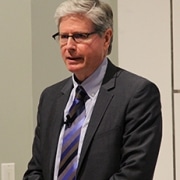What Commentators Get Wrong (and Right) About North Korea

This month, North Korea tested around two dozen missiles, including an intercontinental ballistic missile (ICBM) with a range of approximately 5,000 miles. Some fell to sea near South Korea and Japan, including “the first ballistic one to fly over a nautical border with South Korea,” as Bloomberg News put it in an oddly charged phrase.
The leadership of those countries was understandably upset by this display of nuclear chest-beating. Still, South Korea and the U.S. may have been less than wise in threatening “the end of the Kim Jong Un regime” in their joint response.
“North Korea is a hermit state ruled by a paranoid Stalinist.”
How are we to understand North Korea’s provocative behavior? In U.S. policymaking circles and in the press, there are two opposing frames for understanding North Korea’s actions when it escalates tensions. One paints North Korea as a volatile, irrational state ruled by dangerous eccentrics. The other suggests there is a rational, albeit escalatory, predictability to North Korea’s actions.
It’s worth taking a closer look at both these frameworks and how they’re presented by policymakers and news outlets. Because if the first frame is correct, there is little point in negotiating with North Korea, and containment should be the goal. If, on the other hand, the second frame is apt, it might be possible to make diplomatic progress with a regime whose actions threaten to destabilize the East Asian security order.
The first framework takes the position that “North Korea is a hermit state ruled by a paranoid Stalinist.”
In case you think I’m exercising rhetorical license, those words are a direct quote from Bill Keller, a columnist who went on to become the editor of The New York Times, the U.S. newspaper of record. He rose to that position a few months after he wrote, “North Korea is a hermit state ruled by a potbellied, 5-foot-3 paranoid Stalinist who likes to watch Daffy Duck cartoons. He and his father before him have run the country into such a state of abject misery that some people are surviving on boiled grass.” (He was writing about Kim Jong Il, the father of North Korea’s current leader, Kim Jong Un.)
According to this framing, North Korea is “an isolated totalitarian state that has never learned how to conduct itself in polite society” (Keller again). It is a bizarre, impulsive state prone to irrationally inflammatory outbursts that have to be managed the way a child’s tantrums are handled. Variants of this perspective are common among media commentators and international security experts. A notable example is a cover of The Economist magazine featuring Kim Jong Il.
The other framework is the “tit for tat,” which I associate with North Korea expert Leon Sigal, though he is not alone in his interpretation. According to Sigal, in situations where North Korea feels threatened or betrayed by the U.S. and its allies, the country’s leadership often signals its displeasure and resolve by testing missiles or nuclear warheads.
For example, in 1994, the U.S. and North Korea signed the Agreed Framework, in which North Korea agreed to dismantle its nuclear reactor in exchange for a promise that the U.S. would build two reactors of a different design less connected to nuclear weaponry. The U.S. broke that promise. So, North Korea forged ahead with its nuclear weapons program and withdrew from the nuclear nonproliferation treaty by which it had been bound to forswear nuclear weapons.
We see examples of both frames in reporting on North Korea’s recent missile tests in the two leading U.S. newspapers, The Washington Post and The New York Times. The Washington Post’s coverage definitely falls into the menacing hermit state framework. One article opens with: “North Korea is ready to carry out its first underground nuclear test in years, South Korea’s defense chief said Thursday, as he and the Pentagon’s top official delivered a stark warning to Pyongyang that a strike would result in ‘the end of the Kim Jong Un regime.’”
North Korea has not tested a nuclear weapon for five years, despite repeated predictions in the U.S. press that they were on the brink of doing so—predictions that were not corrected when they didn’t actually come to pass. By beginning the article with the words “North Korea is ready to carry out its first underground nuclear test in years,” The Washington Post gives false materiality to yet another such prediction. In the next part of the sentence, the authors slide, in a few words, from a speculative nuclear test to a nuclear “strike”—the most destructive action a state could undertake. This is quite a leap, especially given that the U.S. has conducted more than 1,000 actual (not speculative) nuclear tests.
Subscribe to the Ethical Systems newsletter
The Washington Post article then piles on more examples of North Korea’s irresponsible behavior, such as providing artillery shells to Russia and its flurry of missile tests. It quotes U.S. Secretary of Defense Lloyd Austin describing this action as “irresponsible and reckless.” The article adds that the ICBM test raises “the specter that Pyongyang is focused on realizing its nuclear ambitions on a global scale.”
But why? By listing various provocative actions, quoting U.S. and South Korean defense leaders condemning these actions, and never suggesting a motive beyond the accretion of more military power, the article gives the impression that this kind of behavior is inherent in North Korea’s nature. North Korea is an existential threat.
There was, in fact, a plausible reason for North Korea to conduct its barrage of missile tests at that particular moment. But The Washington Post article did not allude to that reason until the eighth paragraph. And it did so with strikingly elliptical phrasing: “The torrent of activity [the North Korean missile tests] coincides with joint U.S.-South Korean military exercises.”
Any propagandist would have to admire the use of the word “coincides.” It is bereft of any hint of causation. North Korea’s missile tests were not a response to massive rehearsals of an attack along their border, according to this formulation. The two things just coincided in time.
The New York Times did much better. It did not skimp on details of North Korea’s provocative behavior: 23 missiles launched in one day, Air Force exercises along the border with South Korea, and artillery shells fired into the demilitarized zone between the two countries—in violation of agreements with South Korea.
But the article provided, in detail, the explanatory context more or less absent from The Washington Post piece. It portrayed the missile activity as a “counter” to Operation Vigilant Storm—the joint U.S.-South Korean military exercise that sent 240 warplanes into the air over six days to conduct 1,600 mock sorties against North Korea.
The article stated: “North Korea has typically protested joint military drills by the United States and South Korea, accusing them of preparing to invade, and cited them as a reason that it was building its nuclear arsenal.”
The author added this insightful observation: “Two B-1B Lancer bombers, taking off from Guam, the U.S. territory in the West Pacific, flew over South Korea, flanked by four South Korean F-35A fighter jets and four American F-16 jets.” The New York Times pointed out that “the North Koreans are particularly sensitive about long-range American bombers over South Korea, after U.S. aerial bombings leveled their country to ashes during the Korean War in the 1950s.” For good measure, TheNew York Times even illustrated the article with a picture of the B-1s and their escorts.
This matters. If Congressional staffers, members of Congress, Pentagon and State Department officials, international security experts in universities, and researchers in think tanks read only The Washington Post story and the many others like it, they would imbibe a perspective that portrays North Korea as congenitally incendiary. From this perspective, the only reasonable course of action for the U.S. would be to threaten massive force to deter North Korea and wait for its regime to collapse.
The New York Times piece points in a different policy direction. It portrays the U.S., South Korea, and North Korea as players in an action-reaction drama. It contextualizes North Korea’s behavior in collective fears arising from past suffering. In doing so, the article affords North Koreans a modicum of humanity. Plus, it invites reflection on how dysfunctional interactions could be refashioned and mistrust winnowed down.
This is the kind of exemplary journalism we need if North Korea is ever to be brought back into the family of nations.
Hugh Gusterson is a professor of anthropology at the University of British Columbia, Vancouver. With a Ph.D. from Stanford University, he writes about nuclear culture, drone warfare, counterinsurgency, international security, and ethics. His books include Drone: Remote Control Warfare, People of the Bomb: Portraits of America’s Nuclear Complex, and Nuclear Rites: A Weapons Laboratory at the End of the Cold War.
Reprinted with permission from Sapiens.






